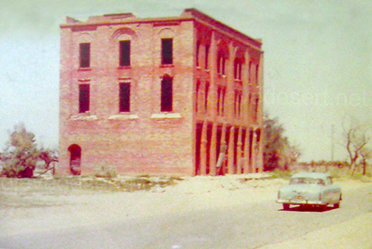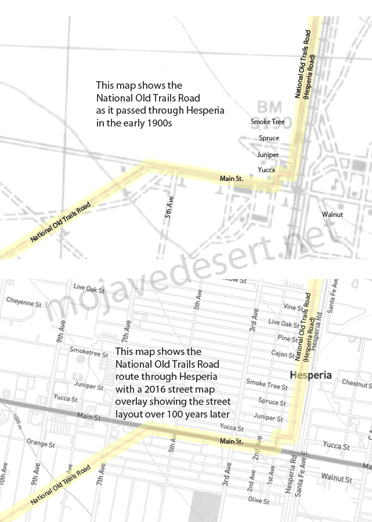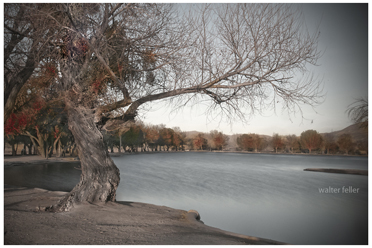Hesperia, California

Hesperia's Past
The City's history stretches far beyond its 1988 incorporation. Hesperia's past is rich with the history of the Spanish settlers of the 1781 land grant Rancho San Felipe, Las Flores y el Paso Del Cajon, and later the westward travelers of the Mormon Trail. Before these times however, the area was sparsely populated by the Serrano Indians who called the area Topipa.
Max Stroebel, who was to become known as the Father of Orange County, acting as agent for a syndicate bought 50,000 acres of land encompassing much of what makes Hesperia today. The land was in anticipation of a railroad which was not to be for nearly 15 years, far too long for the investors. The land was sold at a loss and became the property of a German Temperance Colony.
The first major turning point in present day Hesperia occurred in 1885, when the California Southern railroad tracks were completed. This resulted in Hesperia's first industry, providing juniper wood to bakers in Los Angeles by way of train. Juniper is a very hard wood that was used as fuel for kilns up until the early 1900s, when oil became the principal fuel for bakers. That change in technology did not slow Hesperia's progress.
The 1900s were a booming time with the increased popularity of automobiles. The City served as the last stopping point before travelers made the treacherous trip down the Cajon Pass.
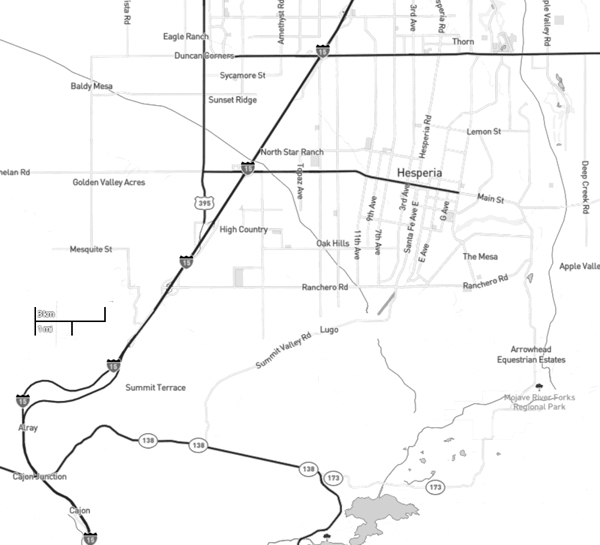
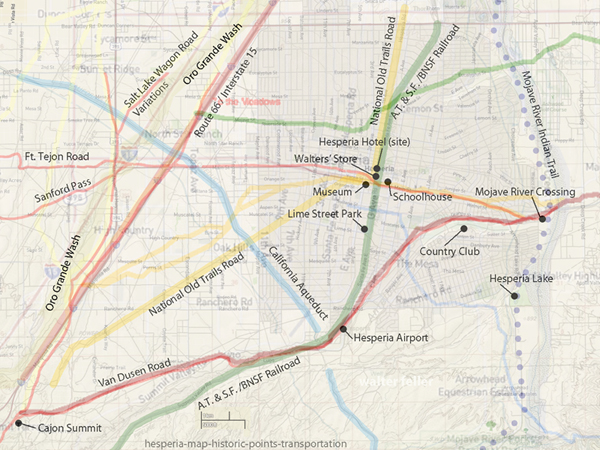
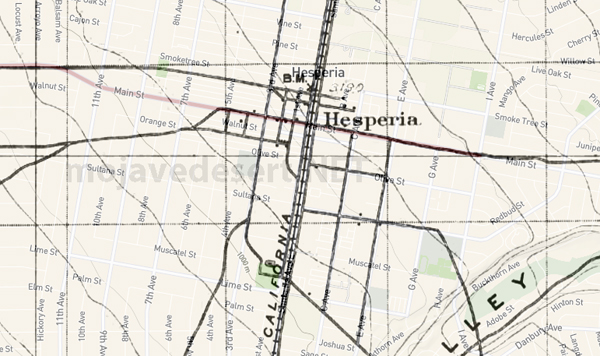
Hesperia wagon roads prior to National Old Trails Road
About Hesperia
Population - 90,100
Square Miles - 26
Elevation - 3191
About 32 miles north of San Bernardino, California
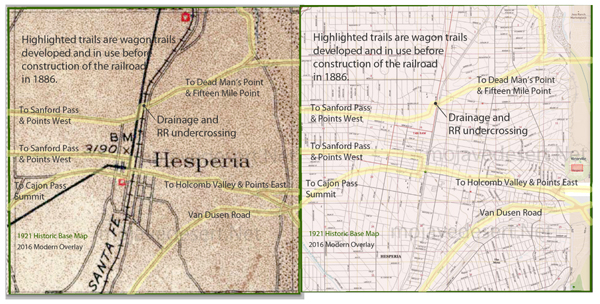
ENTERPRISES
Appleton Land, Water and Power Company.
The Appleton Land, Water and Power Company is the successor of the Hesperia Land and Water Company. The older company was organized in 1886 with an authorized capital stock of $300,000, for the purpose of supplying water to and selling the Stroebel lands which were acquired at the time of organization. The lands had originally been purchased from the government about 1870 when the public lands were, under certain conditions, sold in unlimited quantities at $1.25 per acre.
The Stroebel holdings consisted of about 30,000 acres situated in the Mojave River bottom and on the west mesa, and comprised township 4 north and most of the even-numbered section of township 5 north, range 4 west. About 20,000 acres of the lands had been acquired under a single patent.
Soon about 2,000 acres, including the dam site at the Upper Narrows (Plate V, Fig. 1), were sold and the towns of Victorville and Hesperia were started. A tract of 160 acres at the forks of Mojave River, together with the water right appurtenant to it, also the claim to the surplus waters of the West Fork, were purchased. A conduit was constructed to divert Water from Deep Creek at a point above the forks and convey it across the main Mojave River for the irrigation of lands in the vicinity of Hesperia on the west mesa. From the intake to the Mojave River the conduit consisted of four miles of concrete lined ditch (Plate II, Fig. 2). The water was then carried under the river by inverted siphon which, together with the extension to Hesperia, consisted of five miles of 14-inch steel riveted pipe. The pipe terminated in an earthen reservoir of 58 acre-feet capacity. Some apple orchards were planted and these, together with other crops, made a total of about 1,000 acres which were irrigated from the system at one time. The project had been launched toward the end of a period of unusual activity in the exploitation of lands throughout southern California, and as a reaction there followed a period of general depression among private corporate colonization enterprises accompanied by the complete failure of numerous state irrigation districts. During this era of litigation with its disastrous effect on irrigation securities, the Hesperia company made no further progress and was unable to finance the development of more water for the reclamation of additional land. What was most needed to make the system efficient for the lands sold and adequate for a larger area was storage of winter flood water for use in the late summer when the flow of Deep Creek was at the lowest stage. The area irrigated became smaller, and Hesperia, which had given promise of becoming a prosperous settlement, declined. The water system was operated at a loss. The steel siphon under Mojave River was washed out by flood several times, but was each time replaced, although for two years prior to the reorganization in 1911. no water was delivered at Hesperia. The cost of the irrigation works was estimated at $100,000 in 1910.
In 1911 the system was transferred to a new corporation, the Appleton Land. Water and Power Company, with an authorized capital of $300,000, of which $250,250 is issued. At the time of appraisal by the California Railroad Commission the company stated its assets to be $575,000, and liabilities $448,273. Improvements were begun, including the relining of the intake ditch, the construction of four miles of 30-inch steel riveted pipe, including the inverted siphon under Mojave River which was placed in a new location. Two miles of the old 14-inch pipe connecting the main line with Hesperia remain in place. The diversion works consist of a lower concrete dam 20 feet long across Deep Creek and headgates. The capacity of the main conduit is probably 40"second-feet.
The Hesperia Water Company was organized in 1915 with a capital stock of $40,000, of which $10,500 is issued, to distribute and serve water to the town of Hesperia and to the users for irrigation under the system.
The Victorville water system is still owned by the Appleton company.
The Hesperia Water Company obtains the water from the Appleton company under lease and is classed as a public utility, and as such is regulated by the California State Railroad Commission. The water rate approved by the (-omission is 1.5 cents per hour-inch. The handling of the water sales under this subsidiary organization divorces the public service from the land colonization enterprise. In 1916 only 90 acres of apple orchard and 220 of alfalfa and corn were irrigated.
Of the Appleton Land, Water and Power Company's lands 20,000 acres are in one tract, 18.000 acres of which are commanded by the main pipe line. Laterals would have to be extended to irrigate this area. The lands are not now being offered for sale.
The land in the Lower Narrows of Mojave River (Plate V, Fig. 2), between Victorville and Oro Grande, which has possibilities as a dam site, was at one time acquired by the predecessor of this company, but it was sold and no storage at the Lower Narrows has been seriously contemplated by these companies or others.
The company claims riparian rights to about 20,000 acres acquired from the government under one patent, also appropriation rights, one relating back to the filing for the ditch purchased, another to the filing for the Deep Creek diversion and conduit to Hesperia, another on the surplus water of the West Fork and the control of other filings made in 1911.
Adapted from;
STATE OF CALIFORNIA DEPARTMENT OF ENGINEERING BULLETIN No. 5 REPORT ON THE
Utilization of Mojave River for Irrigation in Victor Valley, California 1918
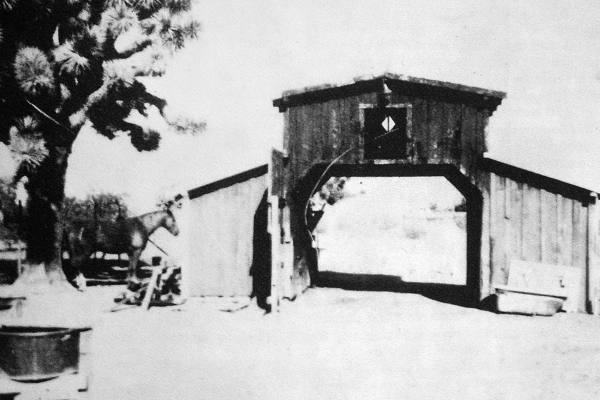
Hesperia Livery Stable c.1915
Hesperia Weather
Schoolhouse
Walters' Market
Hesperia Lake
Golf Club
Hesperia Airport
Hesperia Hotel
Flintstone House
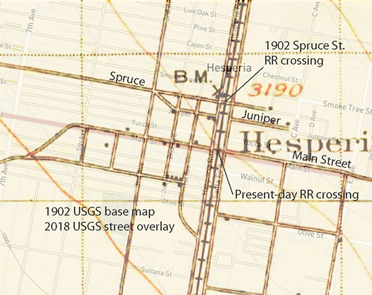
Spruce St. at grade RR crossing, 1902
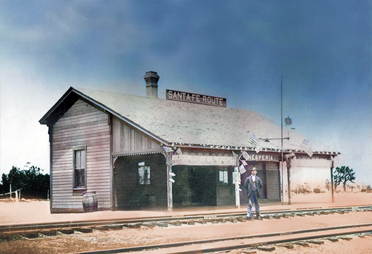
A 15 foot by 20 foot, wooden, moveable station once stood on the east side of Hesperia Road next to the railroad tracks at Spruce St. A 12 foot by 12 foot jail was built alongside. The California Southern Railroad used Hesperia for a stopping point.
Elias Hefner photo - 1900 (adapted from HMdb.org)
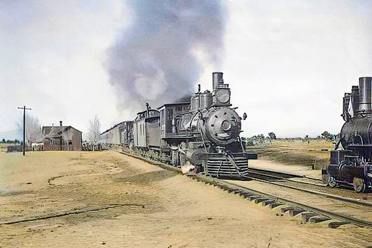
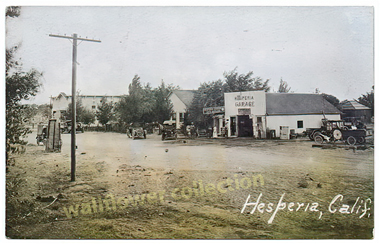
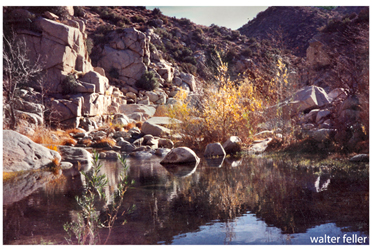
Lake Adelaide
.jpg)
Hesperia Ditch
A History of Hesperia
The Ghost that Refuses to Die - by E.C. JaegerHigh Desert Plains & Hills
Mojave River
Vanyume Indians
They ranged along the Mojave River from Victorville/Hesperia to east of Barstow. The Vanyume (Wanyuma) are mentioned in the journal of Jedediah Smith as ...